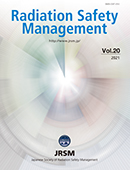Volume 20
Displaying 1-4 of 4 articles from this issue
- |<
- <
- 1
- >
- >|
Paper
-
2021 Volume 20 Pages 1-8
Published: 2021
Released on J-STAGE: April 23, 2021
Download PDF (3224K) -
2021 Volume 20 Pages 20-28
Published: 2021
Released on J-STAGE: July 28, 2021
Download PDF (10071K) -
2021 Volume 20 Pages 29-38
Published: 2021
Released on J-STAGE: November 02, 2021
Download PDF (1099K)
Scientific or Technical Note
-
2021 Volume 20 Pages 9-19
Published: 2021
Released on J-STAGE: June 15, 2021
Download PDF (3563K)
- |<
- <
- 1
- >
- >|
